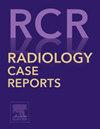Simultaneous findings of shunt obliteration and arterial flow restoration during balloon-assisted technique in the management of idiopathic vertebral arteriovenous fistula
Q4 Medicine
引用次数: 0
Abstract
The etiology of vertebral arteriovenous fistulas (VAVFs) is diverse, and when selecting an optimal therapeutic strategy, it is important to evaluate the feasibility of preserving the vertebral artery (VA). A 75-year-old woman presented with pulsatile tinnitus, and imaging revealed a high-flow vertebral arteriovenous fistula (VAVF) with a single shunt point at the V2 segment; the distal ipsilateral VA was not visualized, suggesting occlusion or a steal phenomenon. Stepwise balloon adjustment near the shunt site eliminated shunt flow and restored distal VA flow, confirming steal and enabling a successful vessel-preserving treatment. This case demonstrates that controlled modulation of flow near the shunt site using a balloon catheter can effectively predict the potential for restoration of VA flow, and suggests the clinical utility of this technique in planning a strategy that achieves shunt obliteration while preserving the vertebral artery.
球囊辅助技术治疗特发性椎体动静脉瘘的同时发现分流闭塞和动脉血流恢复
椎动脉静脉瘘(VAVFs)的病因多种多样,在选择最佳治疗策略时,评估保留椎动脉(VA)的可行性是很重要的。一名75岁女性患者表现为搏动性耳鸣,影像学显示高流量椎体动静脉瘘(VAVF),在V2段有单一分流点;远端同侧VA未见,提示闭塞或窃断现象。在分流部位附近逐步进行球囊调整,消除分流血流,恢复远端VA血流,确认血流并成功进行血管保留治疗。本病例表明,使用球囊导管控制分流部位附近的血流可以有效地预测VA血流恢复的潜力,并建议该技术在规划策略时的临床应用,在保留椎动脉的同时实现分流闭塞。
本文章由计算机程序翻译,如有差异,请以英文原文为准。
求助全文
约1分钟内获得全文
求助全文
来源期刊

Radiology Case Reports
Medicine-Radiology, Nuclear Medicine and Imaging
CiteScore
1.10
自引率
0.00%
发文量
1074
审稿时长
30 days
期刊介绍:
The content of this journal is exclusively case reports that feature diagnostic imaging. Categories in which case reports can be placed include the musculoskeletal system, spine, central nervous system, head and neck, cardiovascular, chest, gastrointestinal, genitourinary, multisystem, pediatric, emergency, women''s imaging, oncologic, normal variants, medical devices, foreign bodies, interventional radiology, nuclear medicine, molecular imaging, ultrasonography, imaging artifacts, forensic, anthropological, and medical-legal. Articles must be well-documented and include a review of the appropriate literature.
 求助内容:
求助内容: 应助结果提醒方式:
应助结果提醒方式:


